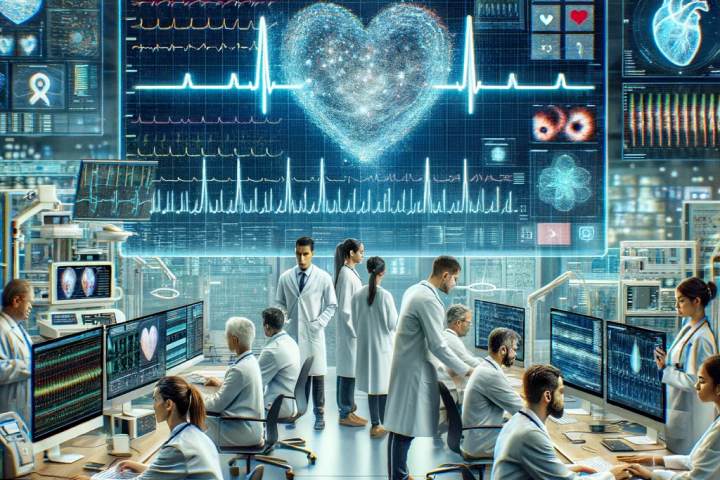
Imagine a world where every heartbeat recorded on paper over decades could tell a story, a story that could save lives. This is the world that the authors of “ECG-Image-Kit: A Synthetic Image Generation Toolbox to Facilitate Deep Learning-Based Electrocardiogram Digitization” are trying to create. Led by Kshama Kodthalu Shivashankara and their team, they’ve embarked on a mission to give old electrocardiogram (ECG) records a new lease on life.
ECGs are crucial for diagnosing heart diseases, which, believe it or not, are the top reason people worldwide face life-threatening situations. But here’s a twist: millions of these ECGs are stuck on paper, especially in less wealthy places, making it hard to use them with today’s smart technology.
Enter the heroes of our story: the ECG-Image-Kit. This toolkit is like a magic wand that transforms these old paper records into digital gold. It doesn’t just take a picture but recreates the ECG in a way that computers can understand and learn from. Think of it as turning handwritten letters into a digital font that your computer can read.
The team didn’t stop at just digitizing. They knew the real challenge was making these digital ECGs look and feel like the real deal, complete with all the wrinkles, scribbles, and smudges you’d find on paper. This is crucial because for a computer to learn accurately, it needs to train on images that look as close to real life as possible.
Now, you might wonder, “Hasn’t this been tried before?” Well, yes, but our intrepid researchers found a new way to tackle old problems. Previous attempts were a bit like trying to fit a square peg in a round hole – they worked, sort of, but not well enough. The ECG-Image-Kit, on the other hand, is like having the right key for every lock, making it easier and more accurate to bring these ECGs into the digital age.
The proof is in the pudding, as they say. The team took a massive collection of ECG data, waved their magic wand, and created a digital version that computers could learn from. And it worked! They were able to check the heartbeat data in these images against the real thing and found it was spot-on, proving that their digital ECGs could stand shoulder to shoulder with the originals.
But why does this matter to you and me? Well, by saving these heartbeats from being lost in time, researchers can study them and uncover patterns that could predict and prevent heart diseases. It’s like having a time machine that can bring back lost treasures, treasures that can save lives.
The journey doesn’t end here, though. The team dreams of adding even more lifelike features to these digital ECGs, making them indistinguishable from the ones doctors take today. They’re also thinking about teaming up with heart specialists to put their digital ECGs to the ultimate test and maybe, just maybe, use even smarter technology to make them even better.
The ECG-Image-Kit isn’t just about saving old records; it’s about unlocking a treasure trove of information that could lead to healthier hearts worldwide. And in this heartwarming tale of technology meeting medicine, every heartbeat counts.

Our vision is to lead the way in the age of Artificial Intelligence, fostering innovation through cutting-edge research and modern solutions.